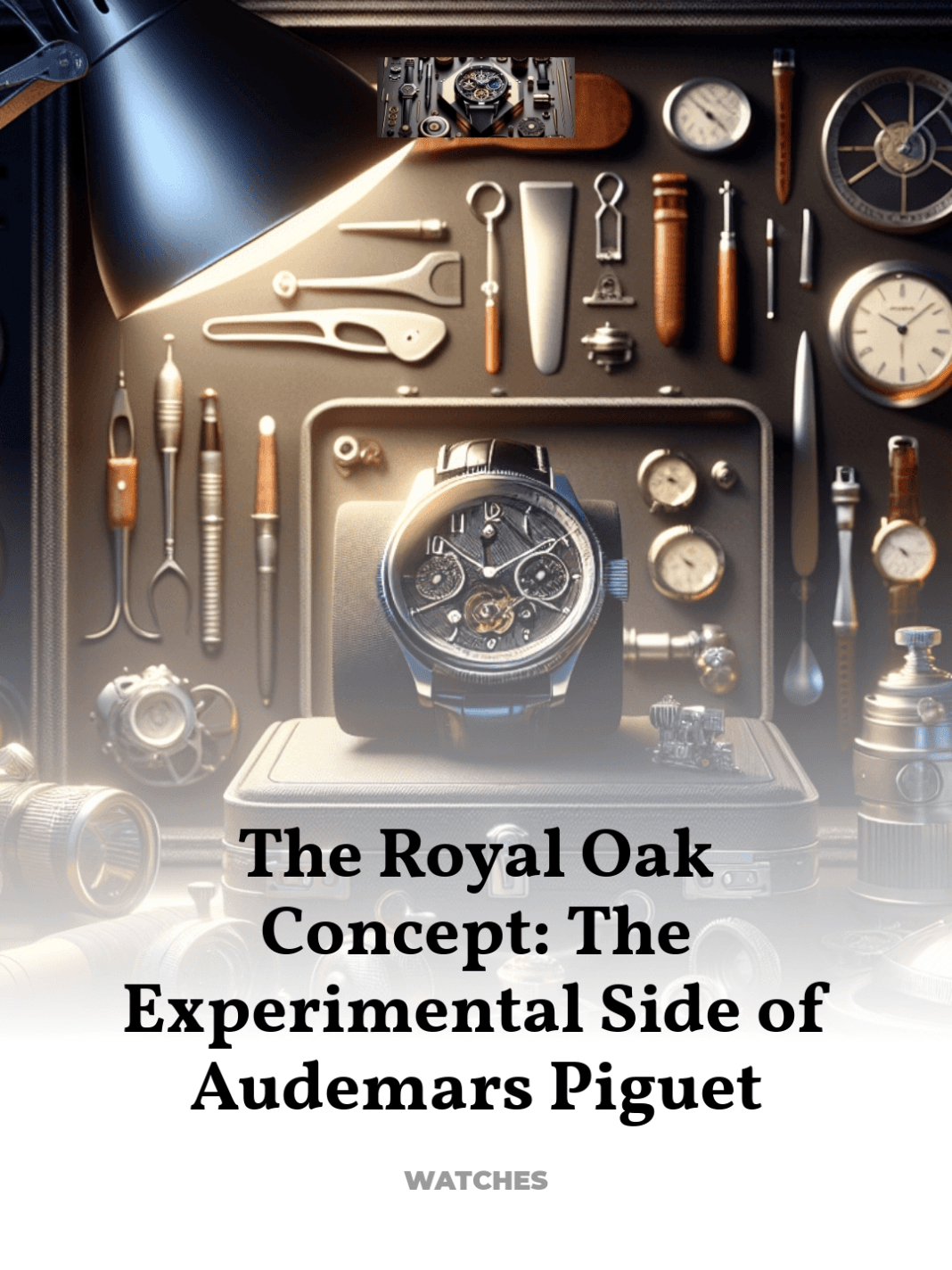Exploring the Avant-Garde Designs Pushing the Limits of Horology
The Royal Oak Concept series by Audemars Piguet stands as a pinnacle of modern watchmaking, merging avant-garde aesthetics with groundbreaking technical innovation.
- The Genesis of the Royal Oak Concept
- Design and Innovation in the Royal Oak Concept
- Technical Sophistication and Horological Advances
- Cultural Impact and Iconic Status
- The Future of Watchmaking: What Lies Ahead for the Royal Oak Concept
The Genesis of the Royal Oak Concept
When Audemars Piguet introduced the Royal Oak in 1972, it not only revolutionized the luxury watch industry with its unique octagonal bezel and integrated bracelet but also set a new standard in watchmaking. Building on this legacy, the Royal Oak Concept was launched in 2002 as a testament to the brand’s commitment to innovation and craftsmanship.
The Royal Oak Concept was born from a desire to advance the boundaries of what is mechanically possible, combined with a futuristic approach to watch design. It serves as a platform for Audemars Piguet’s engineers and watchmakers to experiment with new materials, complex mechanisms, and bold aesthetics.
Key Milestones in the Development of the Royal Oak Concept
- 2002: Introduction of the first Royal Oak Concept watch, featuring a case made from Alacrite 602, one of the hardest materials at the time.
- 2008: Launch of the Royal Oak Carbon Concept, showcasing pioneering use of forged carbon and ceramic.
- 2015: Debut of the Royal Oak Concept Laptimer, a complex chronograph with a unique laptimer function emphasizing Audemars Piguet’s links to motorsport.
Design and Innovation in the Royal Oak Concept
The design of the Royal Oak Concept series is a radical departure from traditional watch aesthetics, featuring an exposed, intricate movement and a case that highlights advanced materials such as ceramic, titanium, and forged carbon. Each element is crafted to not only enhance the watch’s functionality but also to create a visual spectacle on the wrist.
The integration of the watch’s case and movement is a hallmark of the Concept series. This seamless design not only enhances the structural integrity of the watch but also provides a smooth aesthetic flow that is both visually appealing and ergonomically superior.
Exploring Material Innovation
- Ceramic: Known for its scratch resistance and durability, ceramic is used extensively in the Royal Oak Concept series. Its lightweight nature and hypoallergenic properties make it ideal for luxury watches.
- Titanium: Favoured for its strength and lightness, titanium is often used in the cases and movements of the Royal Oak Concept watches to reduce overall weight.
- Forged Carbon: Offering a distinctive marbled appearance, forged carbon is not only aesthetically unique but also exceptionally tough and light.
Technical Sophistication and Horological Advances
The Royal Oak Concept series is not just a design marvel; it is also a showcase of some of the most sophisticated watchmaking techniques in the world. Each piece often contains complications that challenge the very limits of timekeeping technology.
One of the standout features in the series is the use of a Gyroscopic module that ensures supreme accuracy by negating the effects of gravity on the movement. This feature is a testament to Audemars Piguet’s relentless pursuit of precision.
Innovations in Timekeeping
- Supersonnerie Technology: The Royal Oak Concept series features models with advanced minute repeater mechanisms that produce exceptionally clear and resonant chimes.
- Flying Tourbillon: Some models boast a flying tourbillon that enhances the watch’s accuracy while providing a captivating visual display of its mechanical complexity.
- Laptimer Chronograph: This complication allows for simultaneous timing of multiple events, an innovation inspired by the brand’s involvement in motorsports.
Cultural Impact and Iconic Status
The Royal Oak Concept series has not only pushed the boundaries of traditional watchmaking but has also made a significant impact on watch collecting and fashion. It challenges conceptions of luxury watches, combining technical prowess with a bold style that resonates with a modern audience.
Icons of sports, music, and cinema often choose the Royal Oak Concept, drawn to its distinctive look and the statement it makes about breaking conventions and setting trends.
Notable Wearers and Collaborations
- Michael Schumacher: The legendary Formula One driver collaborated with Audemars Piguet on the Royal Oak Concept Laptimer, a reflection of his passion for precision and excellence.
- LeBron James: As a symbol of both luxury and performance, the Royal Oak Concept is favored by high-profile athletes like LeBron James who appreciate its unique blend of advanced technology and bold design.
The Future of Watchmaking: What Lies Ahead for the Royal Oak Concept
The ongoing evolution of the Royal Oak Concept series promises to continue influencing the luxury watch industry. Audemars Piguet’s commitment to innovation and its fearless approach to design and technology signify that future models will further explore the possibilities of what a watch can be.
As we look forward, the integration of digital technology and traditional watchmaking is an area ripe for exploration. The potential for smart features in a mechanically complex watch could open new avenues for functionality and interactivity, without compromising on luxury and design.
For further reading on the technical and design philosophy behind the Royal Oak Concept series, explore authoritative sources such as the official Audemars Piguet website.



